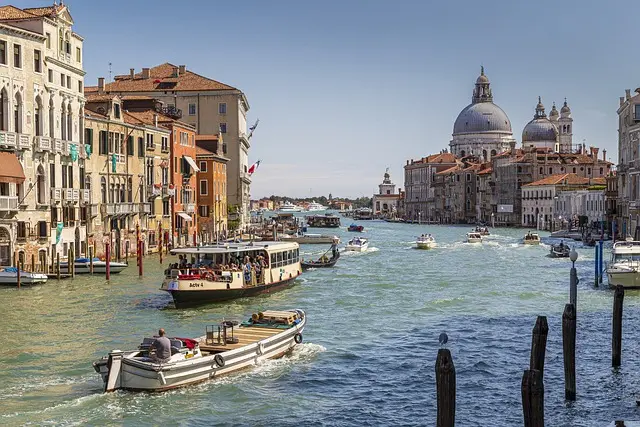
One day on the main island
Grand Canal
Venice The Grand Canal is the main waterway of the city of Venice, Italy, and the natural waterway from San Marco Basilica to Santa Chiara Church is in an inverse S shape, dividing the city into two parts. The Grand Canal is an inverted S-shape, with more than 100 Gothic, Romanesque, Byzantine and Venetian buildings lining its banks, all of which were the residences of Venetian aristocrats and wealthy merchants from the 12th to the 18th centuries. The recommended time to visit the Grand Canal is in the morning or afternoon.
Ponte di Calatrava
The Syntagma Bridge is the latest of the four famous bridges on the Grand Canal that runs through Venice and the only modern bridge in the city, designed by the Spanish designer Calatrava (who designed the main venue of the Athens Olympic Games in '04), so it is also known as the Cala Te Cava Bridge, which was inaugurated on September 11, 2008, connecting the Venice railway station and the coach station. It was significant in terms of transportation value, but it was criticized by many opposition parties during its construction. For example, its slope is very steep, which is not conducive to the elderly and disabled people to cross the bridge, the style does not match the city, and it is too close to the barefoot bridge, etc. In any case, it was built and provided a lot of convenience for tourists. The bridge is made of steel and glass, and at night, under the shroud of lights, the whole bridge is transparent and very beautiful.
Rialto Bridge
There are more than 400 bridges in Venice, the most famous of which is the Rialto Bridge leading to the city center, also known as the Commercial Bridge, which is all made of white marble and is the symbol of Venice. The bridge is 48 meters long, 22 meters wide, and 7 meters above the water, supported by 12,000 wooden piles inserted into the water at both ends. The Rialto Bridge was built in 1180 as a wooden bridge and later converted into a suspension bridge. During a celebration in 1444, the bridge broke due to overwhelm. In 1580-1592, it was rebuilt into the current stone bridge. With a floating pavilion at the top of the bridge and more than 20 shops selling jewellery and souvenir stalls, it is one of the most important commercial areas of Venice and has been the commercial center of Europe for 300 years. Shakespeare's famous play The Merchant of Venice is set here.
Ponte dell'Accademia
The Accademia Bridge is one of the four bridges across the Grand Canal in Venice, Italy, at the southern end of the Grand Canal and the second bridge on the Grand Canal in Venice after the Rialto Bridge. Its name derives from the Accademia Gallery in the northwest direction of this bridge. In fact, there used to be a simple bridge here, but it was too low for the gondola to pass here, so the city of Venice built this wooden bridge as a stopgap measure. When it came time to demolish it and build a non-perishable steel bridge, it was unanimously opposed by the citizens of Venice, who were accustomed to this quaint wooden bridge, and the municipal government complied with the will of the people and built steel brackets around the wooden bridge, so that it has survived to this day as the only wooden bridge on the Grand Canal. Today's College Bridge looks quaint and generous, and its wooden structure looks very emotional, and it is bustling with people every day, and tourists from all over the world will come to see this wooden bridge.
